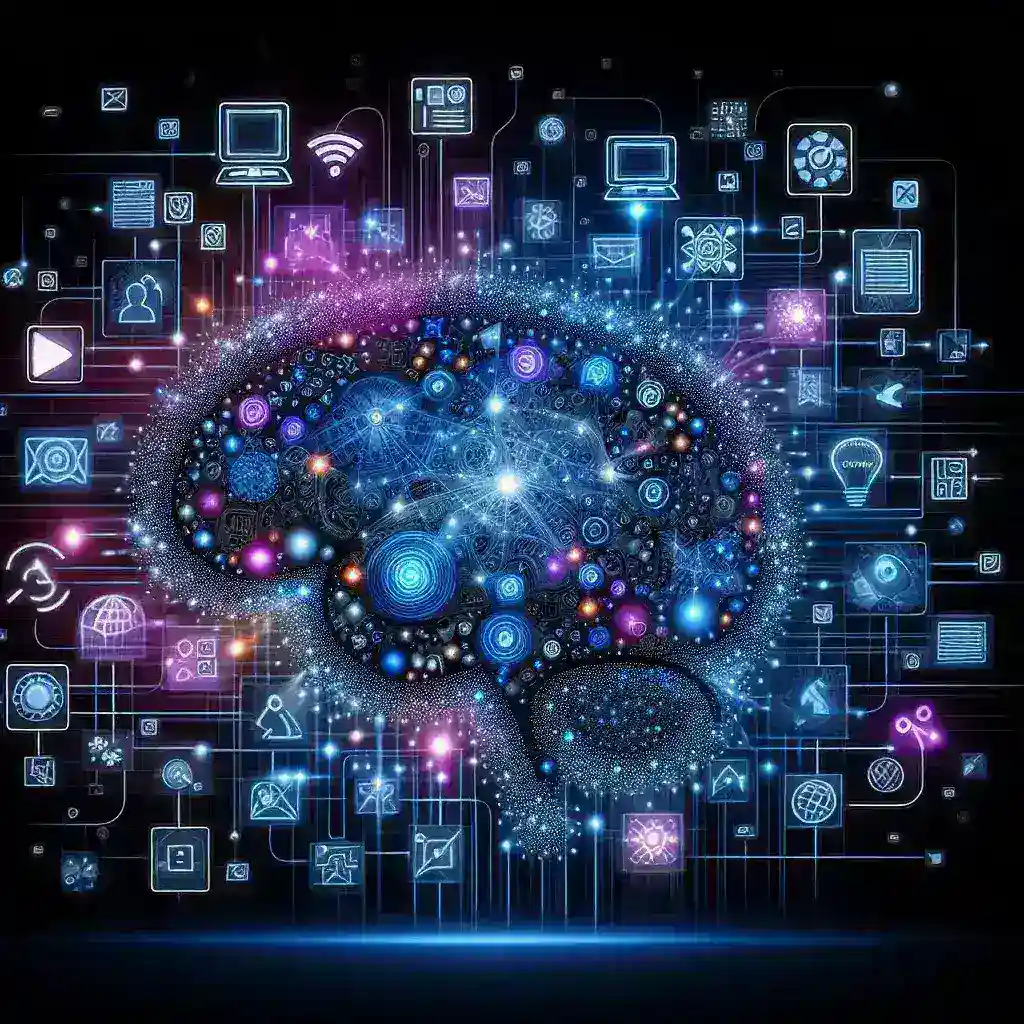In today’s digital landscape, where billions of web pages are created daily, the challenge of organizing and categorizing content has become increasingly complex. Traditional manual methods of content classification are no longer sufficient to handle the massive volume of information flowing through the internet. This is where artificial intelligence (AI) emerges as a game-changing solution, offering sophisticated algorithms and machine learning capabilities to automatically categorize web content with unprecedented accuracy and efficiency.
The Evolution of Content Categorization
The journey from manual content organization to AI-powered categorization represents a significant technological leap. In the early days of the internet, webmasters and content managers relied heavily on human judgment to classify and organize content. This process was not only time-consuming but also prone to inconsistencies and human error. As websites grew larger and more complex, the limitations of manual categorization became increasingly apparent.
The introduction of basic automated systems marked the first step toward intelligent content organization. However, these early systems relied on simple keyword matching and rule-based algorithms that often failed to capture the nuanced meaning and context of content. The breakthrough came with the development of advanced machine learning algorithms and natural language processing (NLP) technologies that could understand content at a deeper, more semantic level.
Understanding AI-Powered Content Categorization
AI content categorization leverages sophisticated algorithms to analyze, understand, and classify web content automatically. This process involves several key components working together to deliver accurate results. Natural Language Processing (NLP) forms the foundation of most AI categorization systems, enabling machines to comprehend human language in its various forms and contexts.
Machine learning algorithms, particularly deep learning models, play a crucial role in training systems to recognize patterns and relationships within content. These algorithms can analyze vast amounts of data to identify subtle connections and categorization criteria that might escape human detection. The result is a system capable of making intelligent decisions about content classification based on learned patterns and contextual understanding.
Key Technologies Behind AI Categorization
Several cutting-edge technologies power modern AI content categorization systems:
- Neural Networks: Deep learning models that can process complex patterns in text and multimedia content
- Transformer Models: Advanced architectures like BERT and GPT that excel at understanding context and semantic relationships
- Computer Vision: AI systems that can analyze and categorize visual content, including images and videos
- Semantic Analysis: Technologies that understand meaning beyond simple keyword matching
- Multi-modal Learning: Systems that can process and categorize content across different media types simultaneously
Implementation Strategies for AI Content Categorization
Successfully implementing AI-powered content categorization requires a strategic approach that considers both technical and business requirements. Organizations must first assess their specific needs, content types, and desired outcomes before selecting appropriate AI solutions.
The implementation process typically begins with data preparation and training. High-quality training data is essential for developing accurate categorization models. This involves collecting representative samples of content across all intended categories and ensuring proper labeling and annotation. The quality and diversity of training data directly impact the system’s performance and accuracy.
Choosing the Right AI Model
Different types of content require different AI approaches. Text-heavy websites might benefit from transformer-based models that excel at understanding linguistic nuances, while multimedia platforms may require multi-modal AI systems capable of processing various content types simultaneously. The choice of model should align with the specific characteristics of the content being categorized and the desired level of granularity in classification.
Organizations can choose between several implementation approaches, including cloud-based AI services, on-premises solutions, or hybrid models. Cloud-based services offer quick deployment and scalability but may raise data privacy concerns. On-premises solutions provide greater control and security but require significant technical expertise and infrastructure investment.
Benefits and Advantages of AI Content Categorization
The adoption of AI for content categorization brings numerous benefits that extend far beyond simple organizational improvements. Enhanced user experience stands as one of the most significant advantages, as properly categorized content enables more effective search functionality, personalized recommendations, and intuitive navigation structures.
From an SEO perspective, AI categorization can dramatically improve website performance by ensuring content is properly organized and tagged for search engine crawlers. This improved organization helps search engines better understand site structure and content relationships, potentially leading to higher rankings and increased organic traffic.
Operational Efficiency and Cost Reduction
AI categorization systems can process thousands of pieces of content in the time it would take humans to categorize just a few. This dramatic increase in efficiency translates to significant cost savings, particularly for organizations dealing with large volumes of content. Additionally, AI systems can work continuously without breaks, ensuring consistent categorization quality around the clock.
The scalability offered by AI solutions is particularly valuable for growing businesses. As content volumes increase, AI systems can adapt and scale accordingly without proportional increases in human resources or operational costs.
Real-World Applications and Case Studies
Major technology companies have successfully implemented AI content categorization across various platforms and industries. E-commerce giants use AI to automatically categorize millions of product listings, ensuring customers can easily find relevant items through search and browsing functions. News organizations employ AI to classify articles by topic, enabling personalized news feeds and improved content discovery.
Social media platforms represent perhaps the most sophisticated implementation of AI content categorization. These systems must process billions of posts, images, and videos daily, categorizing content for various purposes including content moderation, ad targeting, and user recommendations. The scale and complexity of these implementations demonstrate the maturity and effectiveness of current AI categorization technologies.
Industry-Specific Applications
Different industries have found unique applications for AI content categorization:
- Healthcare: Categorizing medical literature and patient records for research and treatment purposes
- Legal: Organizing case law, contracts, and legal documents by topic and relevance
- Education: Classifying educational resources and learning materials by subject and difficulty level
- Finance: Categorizing financial documents, reports, and market analysis for regulatory compliance and decision-making
Challenges and Considerations
Despite its numerous advantages, AI content categorization faces several challenges that organizations must address. Data quality and bias represent significant concerns, as AI systems can perpetuate or amplify biases present in training data. Ensuring diverse, representative training datasets is crucial for developing fair and accurate categorization systems.
The complexity of human language presents ongoing challenges for AI systems. Sarcasm, cultural references, and context-dependent meanings can still confuse even advanced AI models. Additionally, content that spans multiple categories or represents emerging topics may be difficult for AI systems to classify accurately.
Privacy and Ethical Considerations
The use of AI for content categorization raises important privacy and ethical questions. Organizations must ensure that categorization systems comply with data protection regulations and respect user privacy. Transparency in AI decision-making processes is increasingly important, as users and regulators demand explanations for automated categorization decisions.
Future Trends and Developments
The field of AI content categorization continues to evolve rapidly, with several exciting developments on the horizon. Multimodal AI systems that can simultaneously process text, images, audio, and video content are becoming more sophisticated, enabling more comprehensive and accurate categorization of complex multimedia content.
The integration of AI categorization with other emerging technologies, such as augmented reality and voice interfaces, promises to create new possibilities for content organization and discovery. These developments will likely lead to more intuitive and natural ways for users to interact with categorized content.
Advances in Unsupervised Learning
Future AI categorization systems will likely rely more heavily on unsupervised learning techniques that can discover categories and patterns without extensive human-labeled training data. This approach could significantly reduce the time and cost associated with implementing AI categorization systems while improving their ability to adapt to new types of content automatically.
Implementation Best Practices
Organizations considering AI content categorization should follow several best practices to ensure successful implementation. Starting with a clear understanding of business objectives is essential, as this will guide technology selection and implementation strategies. Pilot projects with limited scope can help organizations test AI solutions and refine their approaches before full-scale deployment.
Continuous monitoring and refinement of AI categorization systems is crucial for maintaining accuracy and relevance. Content categories and user needs evolve over time, requiring ongoing adjustments to AI models and categorization schemes. Regular evaluation of system performance and user feedback helps identify areas for improvement and optimization.
Training and change management are often overlooked but critical aspects of successful AI implementation. Staff members need to understand how to work with AI categorization systems and interpret their outputs effectively. Clear processes for handling edge cases and system errors should be established before deployment.
Measuring Success and ROI
The success of AI content categorization initiatives should be measured through both quantitative and qualitative metrics. Accuracy rates, processing speed, and cost savings provide clear quantitative indicators of system performance. However, qualitative measures such as user satisfaction, content discoverability, and overall user experience are equally important for assessing the true value of AI categorization systems.
Return on investment calculations should consider both direct cost savings from reduced manual categorization efforts and indirect benefits such as improved SEO performance, enhanced user engagement, and increased content consumption. Long-term benefits, including improved scalability and competitive advantages, should also factor into ROI assessments.
Conclusion
AI-powered content categorization represents a transformative technology that addresses one of the fundamental challenges of the digital age: organizing and making sense of vast amounts of information. As AI technologies continue to advance, we can expect even more sophisticated and capable categorization systems that will further revolutionize how we organize, discover, and interact with web content. Organizations that embrace these technologies today will be well-positioned to capitalize on the benefits of intelligent content organization while staying ahead of the competition in an increasingly content-rich digital landscape.
The future of web content categorization lies in AI’s ability to understand context, meaning, and user intent at levels approaching human comprehension. As these systems become more sophisticated and accessible, they will undoubtedly play an increasingly central role in shaping how we navigate and consume information in the digital world.







Leave a Reply